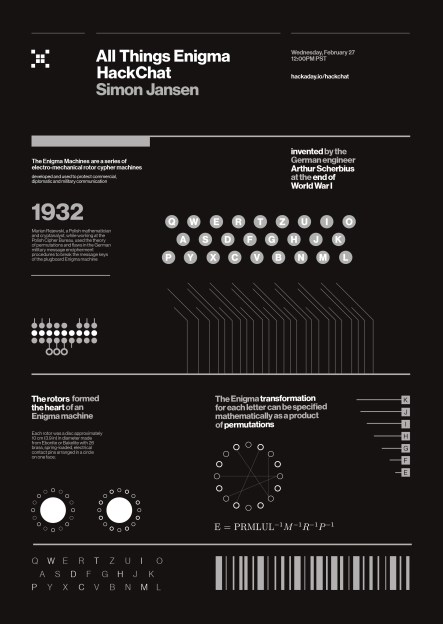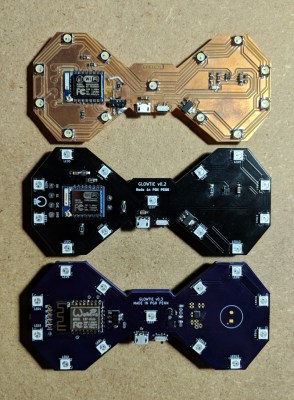Join us Wednesday at noon Pacific time for the All Things Enigma Hack Chat!
 This week’s Hack Chat is a bit of a departure for us because our host, Simon Jansen, has tackled so many interesting projects that it’s hard to settle on one topic. Simon is a multidisciplinary hacker whose interests run the gamut from building an ammo-can Apple ][ to a literal steampunk Rickroller. How about a Bender Brewer? Or a MAME in a TARDIS? Or perhaps making an old phone play music to restore a car by? Oh, and remember that awesome ASCII animation of Star Wars: Episode IV? That was Simon.
This week’s Hack Chat is a bit of a departure for us because our host, Simon Jansen, has tackled so many interesting projects that it’s hard to settle on one topic. Simon is a multidisciplinary hacker whose interests run the gamut from building an ammo-can Apple ][ to a literal steampunk Rickroller. How about a Bender Brewer? Or a MAME in a TARDIS? Or perhaps making an old phone play music to restore a car by? Oh, and remember that awesome ASCII animation of Star Wars: Episode IV? That was Simon.
So, a little hard to choose a topic, but we asked Simon to talk a bit about his recent Enigma watches. He has managed to put an electronic emulation of the Enigma cypher machine from World War II into both a wristwatch and, more recently, a pocket watch. They’re both gorgeous builds that required a raft of skills to complete. We’ll start there and see where the conversation takes us!
Please join us for this Hack Chat, where we’ll discuss:
- Where the fascination with Enigma came from;
- Tools, techniques, and shop setup;
- Melding multiple, disparate skill sets; and
- What sorts of new projects might we see soon?
You are, of course, encouraged to add your own questions to the discussion. You can do that by leaving a comment on the All Things Enigma Hack Chat and we’ll put that in the queue for the Hack Chat discussion.
 Our Hack Chats are live community events on the Hackaday.io Hack Chat group messaging. This week we’ll be sitting down on Wednesday, February 27, at noon, Pacific time. If time zones have got you down, we have a handy time zone converter.
Our Hack Chats are live community events on the Hackaday.io Hack Chat group messaging. This week we’ll be sitting down on Wednesday, February 27, at noon, Pacific time. If time zones have got you down, we have a handy time zone converter.
Click that speech bubble to the right, and you’ll be taken directly to the Hack Chat group on Hackaday.io. You don’t have to wait until Wednesday; join whenever you want and you can see what the community is talking about.
















